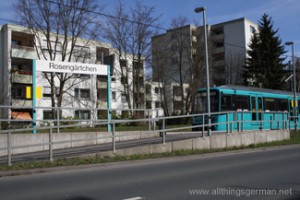 In preparation for the Hessentag, the town of Oberursel and the local transport operators have been pulling out all the stops to make the town as accessible as possible.
In preparation for the Hessentag, the town of Oberursel and the local transport operators have been pulling out all the stops to make the town as accessible as possible.
For example, by the time the Hessentag starts, all of the stations between Weißkirchen and the Hohemark on the line U3 will have been modernised and allow you to get in and out of the trains without steps to go up or down. There are ramps from the pavement up to the platform, and the platform is at the same level as the floor in the train.
When the main station is finished [Read more…]
 For the past few years the stations along the U3 line from Frankfurt to Oberursel have one-by-one been re-built.
For the past few years the stations along the U3 line from Frankfurt to Oberursel have one-by-one been re-built.

